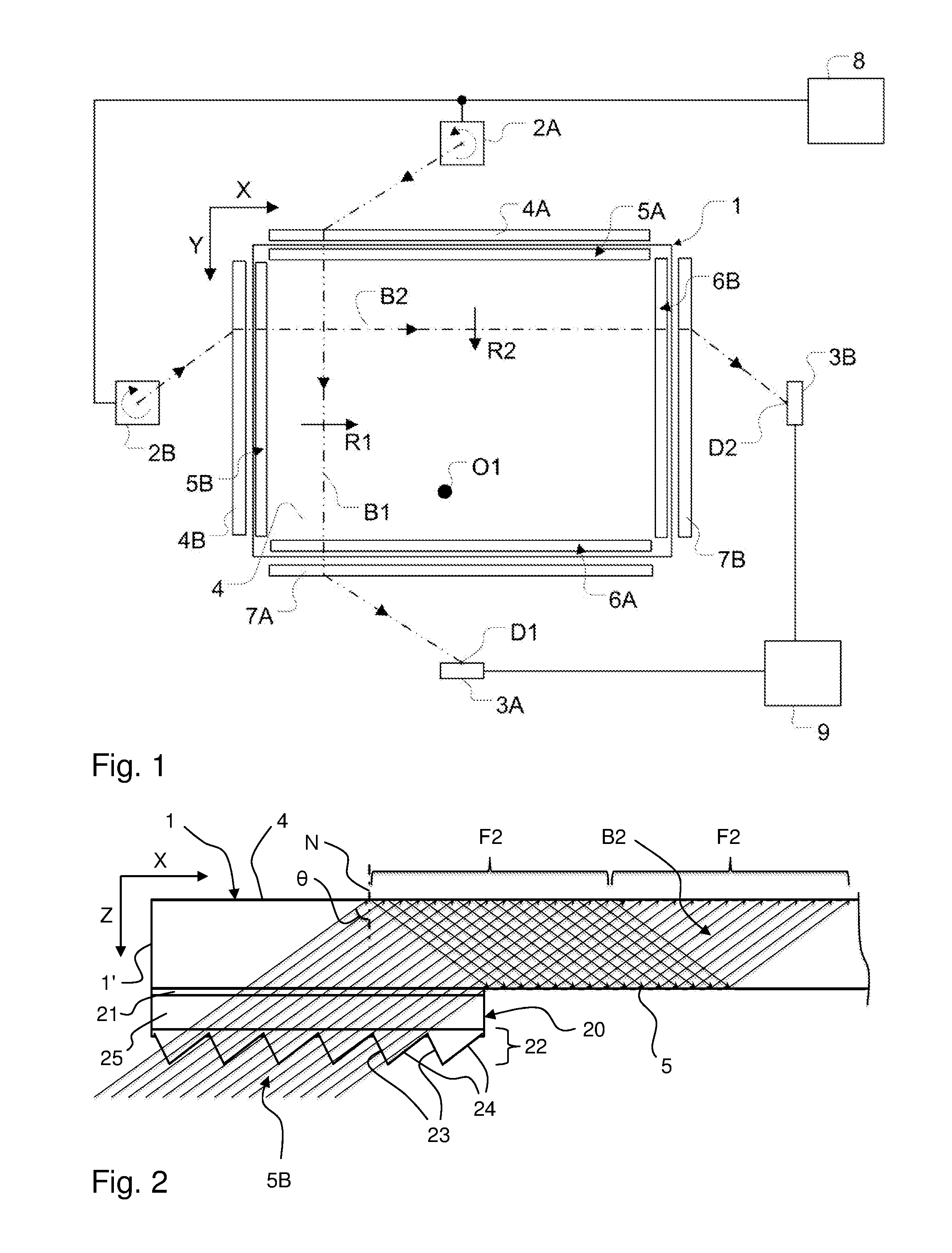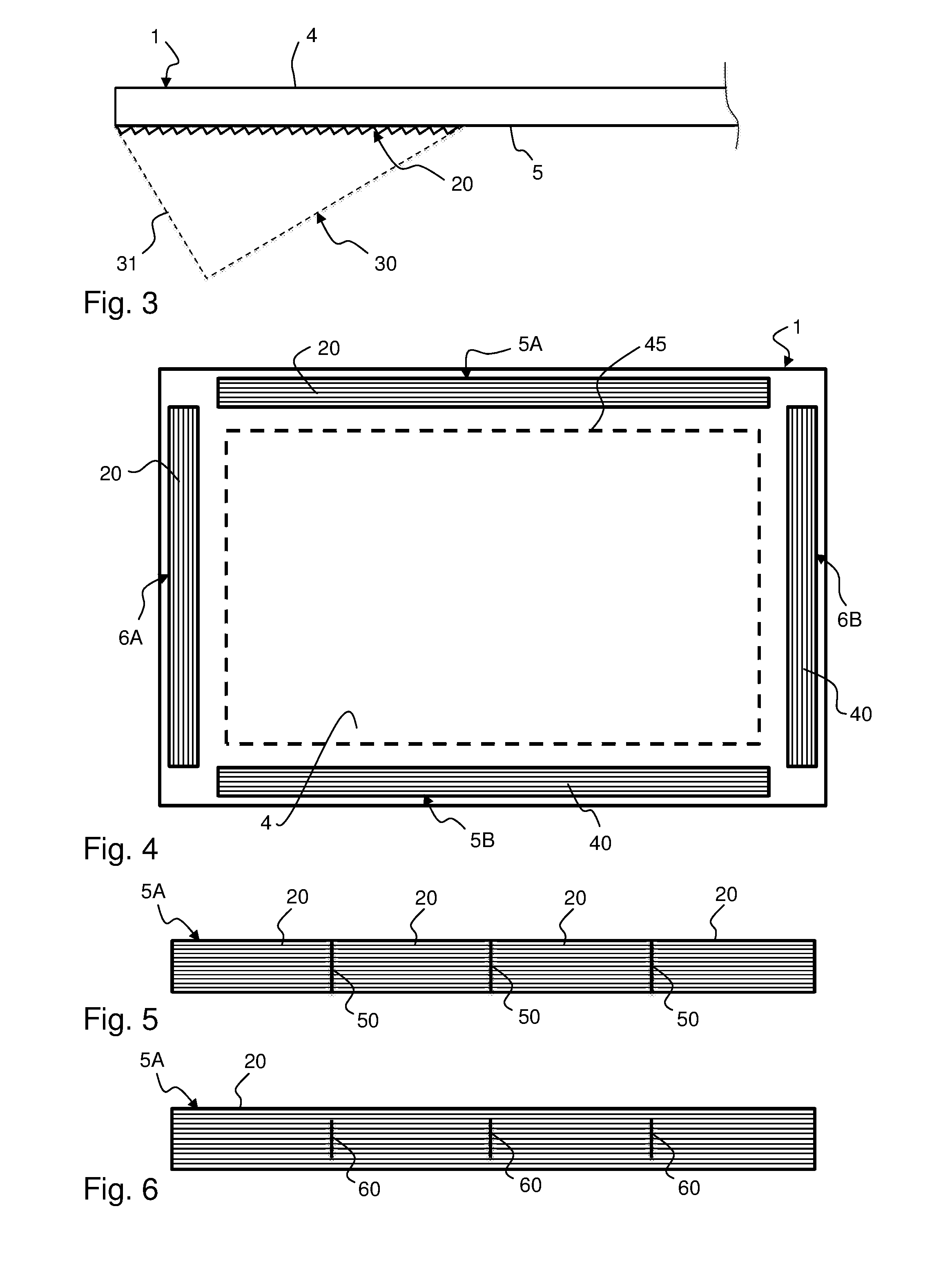Optical incoupling for touch-sensitive systems
a touch-sensitive system and optical incoupling technology, applied in the field of touch-sensitive systems, can solve the problems of difficult optical access to the edge surface, difficult and/or costly to achieve, and add to the footprint of the touch system, so as to achieve efficient and robust coupling of light and reduce dependen
- Summary
- Abstract
- Description
- Claims
- Application Information
AI Technical Summary
Benefits of technology
Problems solved by technology
Method used
Image
Examples
Embodiment Construction
[0037]For the sole purpose of explaining principles of the present invention, the following disclosure will be given with respect to a specific type of touch-sensitive apparatus or touch system in which beams are injected into and swept across a light transmissive panel, and touching objects are detected based on the amount of light that is received at an opposite end of the panel. This type of touch system is also denoted “scanning FTIR system” herein.
[0038]Throughout the description, the same reference numerals are used to identify corresponding elements.
[0039]FIG. 1 is a top plan view of a scanning FTIR system. The system includes a light transmissive panel 1, two light-emitting input scanners 2A, 2B and two light sensors 3A, 3B. The panel may be planar or curved and defines two opposite and generally parallel surfaces 4, 5 (see FIG. 2), which are connected by a peripheral edge surface 1′ (FIG. 2). A radiation propagation channel is provided between the top and bottom surfaces 4,...
PUM
 Login to View More
Login to View More Abstract
Description
Claims
Application Information
 Login to View More
Login to View More - R&D
- Intellectual Property
- Life Sciences
- Materials
- Tech Scout
- Unparalleled Data Quality
- Higher Quality Content
- 60% Fewer Hallucinations
Browse by: Latest US Patents, China's latest patents, Technical Efficacy Thesaurus, Application Domain, Technology Topic, Popular Technical Reports.
© 2025 PatSnap. All rights reserved.Legal|Privacy policy|Modern Slavery Act Transparency Statement|Sitemap|About US| Contact US: help@patsnap.com



